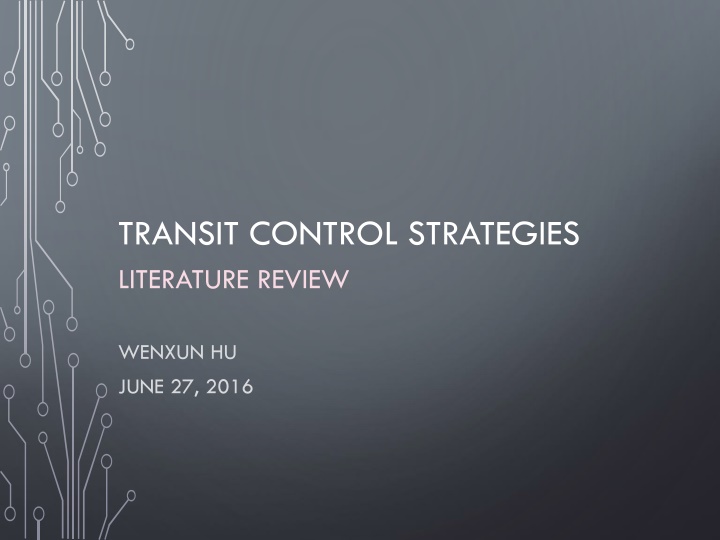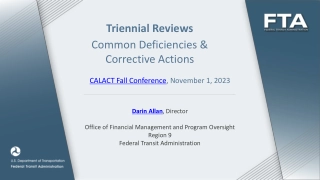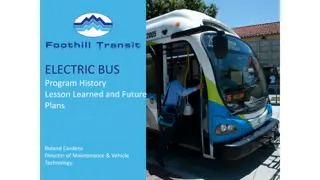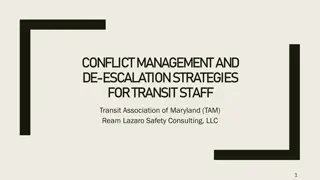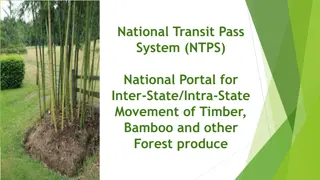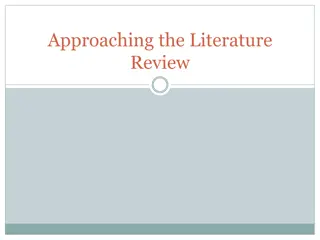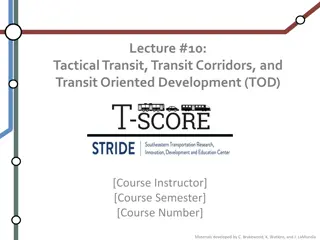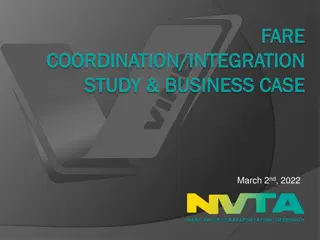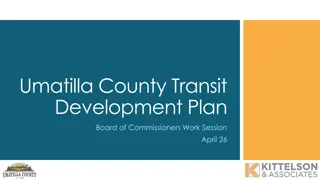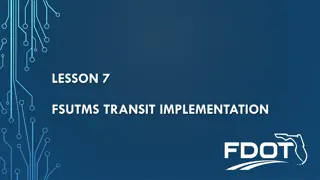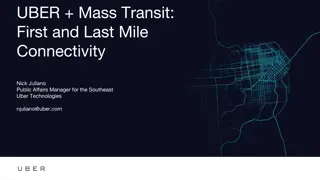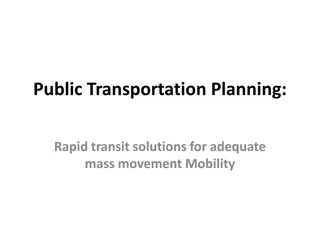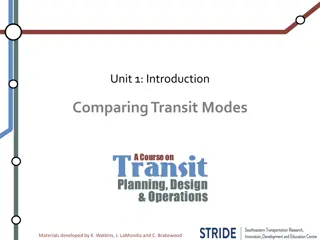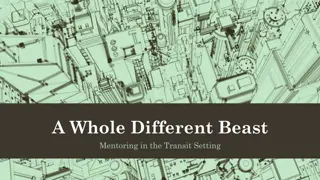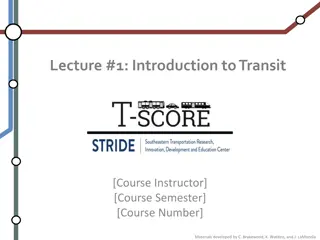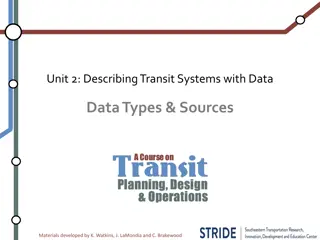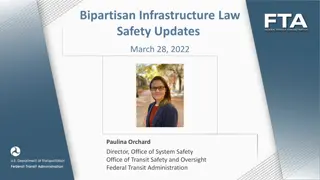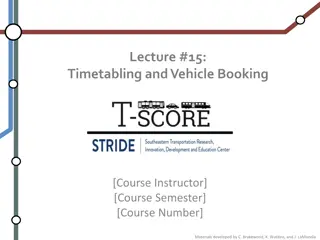Transit Control Strategies Literature Review by Wenxun Hu
This literature review explores transit control strategies focusing on transit reliability, definition, measures, modeling, and results. It covers topics like schedule adherence, headway regularity, holding control, short turning, and transit signal priority.
Download Presentation

Please find below an Image/Link to download the presentation.
The content on the website is provided AS IS for your information and personal use only. It may not be sold, licensed, or shared on other websites without obtaining consent from the author.If you encounter any issues during the download, it is possible that the publisher has removed the file from their server.
You are allowed to download the files provided on this website for personal or commercial use, subject to the condition that they are used lawfully. All files are the property of their respective owners.
The content on the website is provided AS IS for your information and personal use only. It may not be sold, licensed, or shared on other websites without obtaining consent from the author.
E N D
Presentation Transcript
TRANSIT CONTROL STRATEGIES LITERATURE REVIEW WENXUN HU JUNE 27, 2016
OUTLINE Transit reliability Definition measures Modelling of transit reliability Transit control strategies Holding control Short turning Transit signal priority
TRANSIT RELIABILITY - DEFINITION Schedule adherence Headway regularity Travel time consistency Wait time
TRANSIT RELIABILITY - MEASURES On-time performance OTP Average punctuality Weighted delay index Earliness index Travel time Reliability buffer index Buffer index Reliability buffer time metric Coefficient of variation of TT Punctuality based on routes Wait time Excess wait time Budget wait time Wait assessment Average additional wait time Headway adherence Coefficient of variation of headway deviations Second-order stochastic dominance Headway regularity Deviation index based on stops
TRANSIT RELIABILITY - MODELLING Selection of dependent variable Data availability mandatory criteria Weighted decision matrix Data quality Easiness Recognition Selection of independent variables Modelling Backward elimination
TRANSIT RELIABILITY MODELLING RESULTS Reliability measure: coefficient of variation of travel time Route level model R2 = 0.6 Independent variables Positive: dedicated transit lane, far/nearside stop ratio Negative: route length, intersection density, signalized/non-signalized intersections, pedestrian volume, boarding alighting passenger volume, number of connections to subway stations, peak hours, average vehicle volume Segment level model R2 = 0.6 Independent variables Positive: far/nearside stop ratio, TSP, % right turn prohibitions Negative: segment length, intersection density, average vehicle volume, signal cycle length, boarding alighting passenger volume, stop density, number of stops upstream
TRANSIT CONTROL STRATEGIES HOLDING CONTROL Schedule-based holding control Traditional method Hold early buses Headway-based holding control AVL, GPS Bunching Dynamic holding control Objective function: minimize travel/wait time
TRANSIT CONTROL STRATEGIES SHORT TURNING Turns before reaching the scheduled terminal Headway variance High passenger demand in the opposite direction Optimization Objectives: travel time, wait time, cost Decision variables: turning points, vehicle size, frequency,
TRANSIT SIGNAL PRIORITY STRATEGIES Passive priority Predictable transit network Based on transit schedules No detection system Active priority Detected vehicles Conditional priority Unconditional priority Adaptive priority real-time
TRANSIT SIGNAL PRIORITY STRATEGIES Nearside stops Uncertainty of bus dwell time Prediction models of dwell time/travel time/arrival time Lee, et al. 2005; Kim and Rilett 2005; Zeng, et al. 2014 Delay to other traffic Optimization problem Li, et al. 2007; Li, et al. 2011; Christofa and Skabardonis 2011; Zeng, et al. 2014; Ghanim and Abu-Lebdeh 2015 Headway regularity Reinforcement learning
CONCLUSION Holding control, short turning stop skipping, deadheading and expressing Transit signal priority Conventional, static adaptive, dynamic Hypothetical scenario, single intersection corridor, network Optimzie transit reliability
